I have what seems to be a continuously ongoing project to measure low resistances with milliohm precision. The latest version had an inexpensive voltmeter that used the Microchip MCP3421MCP3421 in the display. The chip costs $2.39 in small quantities from Newark and several were ordered with the idea of installing it directly on the milliohm meter PCB. One was soldered to a SOT-23-6 DIP adapter for testing with an Arduino MKR1000.
The MCP3421 is an 18-bit delta-sigma ADC in a SOT-23-6 package with differential inputs. It self calibrates internally for offset and gain on each conversion. The internal voltage reference has a 2.048V accuracy of +/- 0.05% with drift of 15 ppm / degree C. The input range is -2.048V to +2.048V. It uses an I2C serial interface for communication with a microcontroller and operates with a supply voltage of 2.7V to 5.5V. Data rate options include 12-bit (240 samples / second), 14-bit (60 samples / second), 16-bit (15 samples / second), and 18-bit (3.75 samples / second). Here I'll be connecting it to an Arduino MKR1000 and using the 3.3V supply from the microcontroller. Sampling will be done at 18-bits.
Test Setup
An easy to use library named MCP342X for Arduino was found and modified slightly. A bench power supply was gradually increased from 0 to 2.05V and the measurements from the MCP3421 were recorded along with measurements from a Tenma 72-102072-1020 bench multimeter. The test equipment was allowed to warm up for 20 minutes and the ambient temperature during the test was 21 degrees C.
Results
The results are tabulated below.
As shown in plot below, the difference between the MCP3421 and the bench multimeter never exceeded 1.1 mV.
The percent of full scale difference did not exceed 0.055 %.
The test results as compared to the datasheet are within the accuracy of the instrument that I am using for comparison.
Summary
I really like this chip. The SOT-23-6 is a bit of a pain for me to hand solder but doable. It is easy to use and has the resolution and accuracy that I need for my particular application.

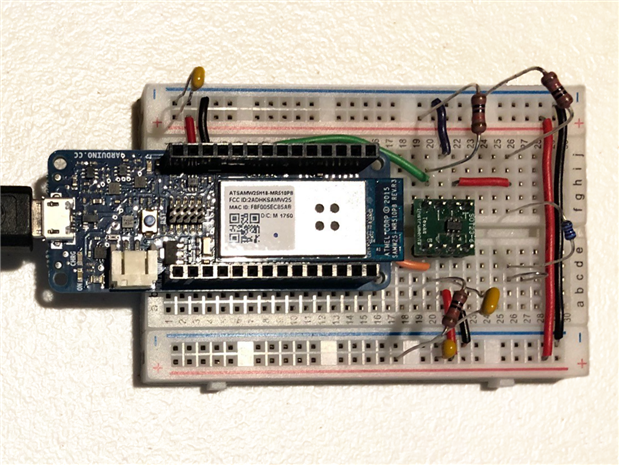
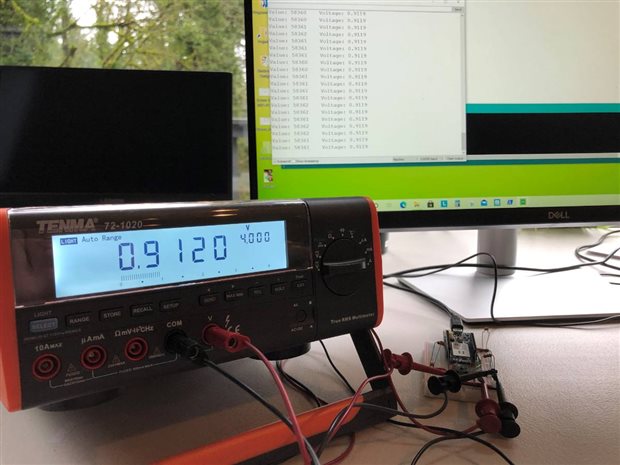
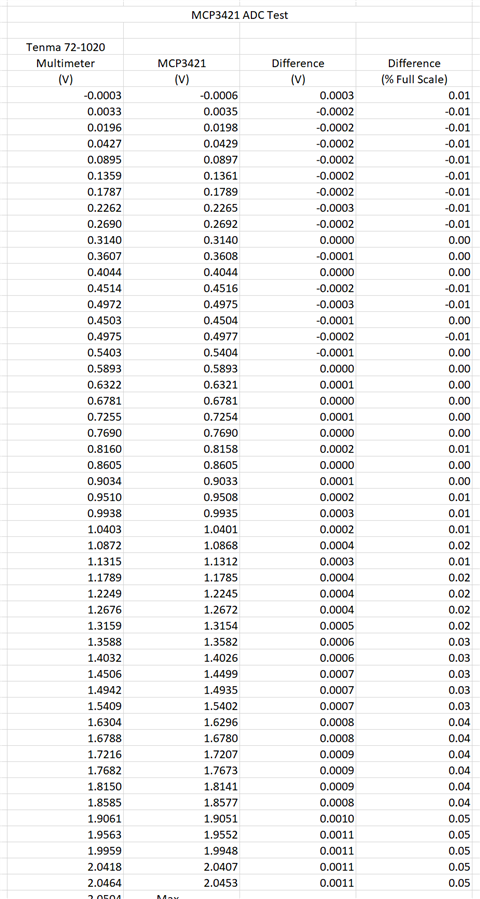
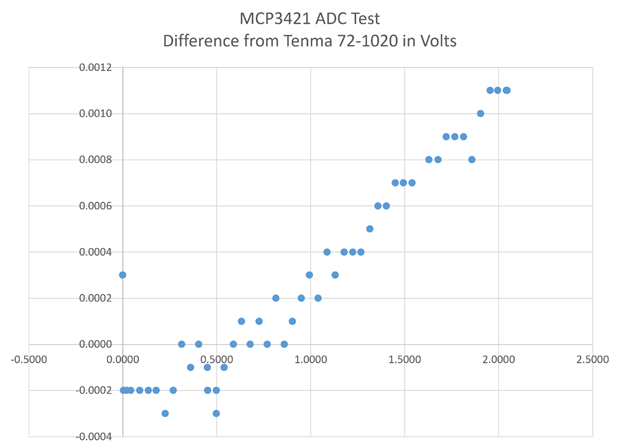
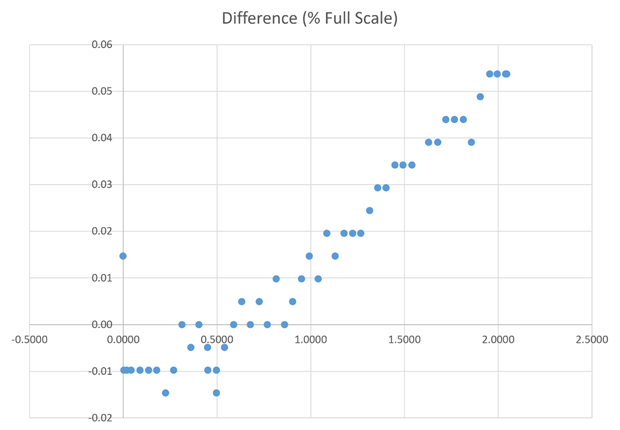
Top Comments
-

Andrew J
-
Cancel
-
Vote Up
+3
Vote Down
-
-
Sign in to reply
-
More
-
Cancel
-

fmilburn
in reply to Andrew J
-
Cancel
-
Vote Up
+2
Vote Down
-
-
Sign in to reply
-
More
-
Cancel
-

Andrew J
in reply to fmilburn
-
Cancel
-
Vote Up
+2
Vote Down
-
-
Sign in to reply
-
More
-
Cancel
Comment-

Andrew J
in reply to fmilburn
-
Cancel
-
Vote Up
+2
Vote Down
-
-
Sign in to reply
-
More
-
Cancel
Children